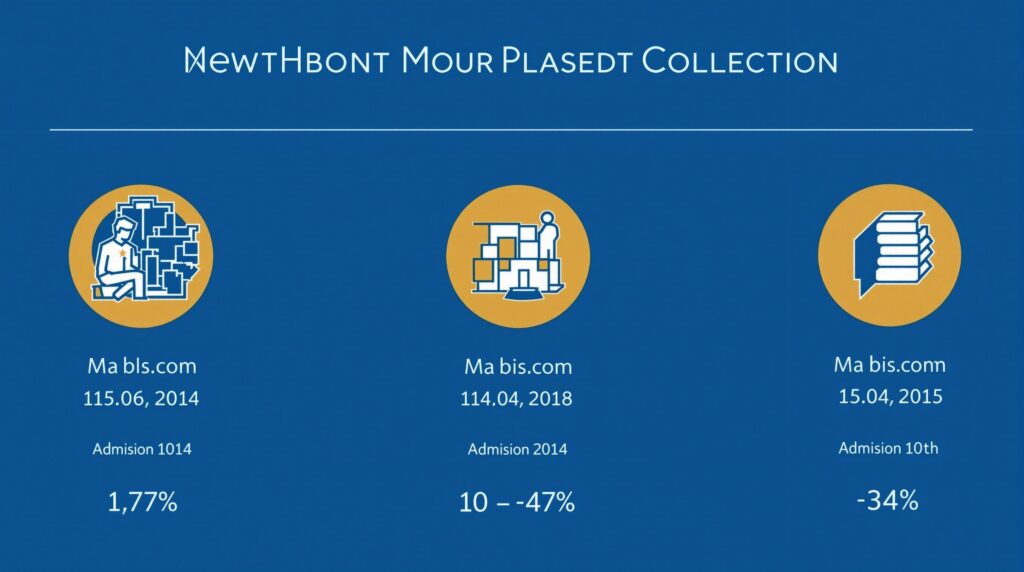Creating an effective grants calendar is a powerful strategy for educators seeking consistent funding opportunities. By organizing application deadlines, reporting requirements, and funding cycles, professionals can transform their approach to securing educational grants while simultaneously building a foundation for career advancement.
Key Takeaways
- A well-structured grants calendar increases application success rates by up to 40%
- Regular calendar maintenance helps avoid missed deadlines and builds funder relationships
- Integrating career goals with grant opportunities creates strategic advancement pathways
- Digital tools can automate reminders and streamline the grant management process
- Collaborative calendars improve institutional coordination and communication among team members
Why You Need a Grants Calendar
A grants calendar serves as the backbone of any successful funding strategy in education. Rather than scrambling to meet approaching deadlines or missing opportunities entirely, a well-organized calendar transforms reactive grant seeking into proactive planning. Research shows that educators who maintain a structured grants calendar are approximately 40% more likely to secure funding compared to those who approach grants haphazardly.
Beyond just tracking deadlines, an effective grants calendar helps you analyze patterns in funding opportunities, prepare materials in advance, and create a sustainable rhythm for your grant-related activities. It also provides a clear picture of your funding pipeline, making it easier to report to stakeholders and plan budgets with greater confidence.

Essential Components of an Effective Grants Calendar
To create a truly functional grants calendar, certain key elements must be included. The following components form the foundation of your system:
- Application deadlines (LOI, draft, and final submission dates)
- Pre-application meetings or webinars
- Internal review timelines
- Reporting deadlines for active grants
- Renewal dates for recurring opportunities
- Funder priorities and funding cycles
I recommend organizing your calendar with color-coding to visually distinguish between different types of deadlines or funding sources. For example, federal grants might be highlighted in blue, while foundation grants appear in green. This visual system creates instant recognition and helps prioritize your work at a glance.
Additionally, include notes on each opportunity’s alignment with your professional goals and institutional priorities. This practice helps you quickly assess which opportunities deserve the most attention and how they contribute to your career advancement strategy.
Tools for Creating Your Grants Calendar
While a simple spreadsheet can serve as a functional grants calendar, several dedicated tools can enhance your efficiency. Consider these options based on your specific needs:
- Google Calendar or Microsoft Outlook (for basic tracking and reminders)
- Asana or Trello (for collaborative project management)
- Specialized grant management software (GrantHub, Instrumentl)
- Custom database solutions (Airtable, Monday.com)
The right tool depends on your budget, team size, and complexity of grant tracking needs. For individuals or small teams, a shared spreadsheet with automated email reminders might be sufficient. Larger organizations with multiple grant seekers may benefit from dedicated software that integrates with other systems and provides advanced reporting features.
Whatever system you choose, ensure it allows for easy updates, accessibility for all relevant team members, and the ability to set reminders well in advance of important dates. The tool should serve your process, not complicate it.
Identifying Grant Opportunities to Include
Populating your grants calendar requires systematic research to identify relevant opportunities. I recommend starting with these reliable funding sources:
- Federal education grants (Department of Education, NSF, NIH)
- State education agencies
- Private foundations with education focus
- Corporate giving programs
- Professional associations in your field
Set aside time monthly to review new opportunities through resources like Grants.gov Workspace, Foundation Directory Online, or education-specific newsletters. When evaluating whether to add an opportunity to your calendar, assess its alignment with your institutional mission, likelihood of success, and potential impact on your career trajectory.
Remember to include recurring grants with annual cycles, even if the exact dates change slightly each year. These established relationships with funders often represent the most sustainable funding sources and deserve priority placement in your calendar.
Aligning Grant Opportunities with Career Goals
The most effective grants calendars do more than track deadlines—they serve as strategic tools for career advancement. To maximize this benefit, I recommend explicitly mapping each opportunity to your professional development plan.
Consider creating categories within your grants calendar that reflect your career aspirations:
- Research advancement opportunities
- Program development funding
- Professional skill-building grants
- Leadership development support
- Networking and visibility opportunities
By thinking strategically about which grants to pursue, you can build a funding history that tells a coherent story about your expertise and direction. This approach not only increases your funding success but also positions you as a subject matter expert in specific educational domains, enhancing your career prospects.
When reviewing your grants calendar quarterly, assess whether your planned applications align with your professional goals. This regular alignment check helps prevent pursuing funding that doesn’t advance your long-term objectives.
Implementing a Calendar Maintenance Routine
Creating a grants calendar is only the beginning—maintaining it is what delivers ongoing value. I recommend establishing a consistent review process to keep your calendar current and effective:
- Weekly check-ins (15 minutes to review upcoming deadlines)
- Monthly updates (1 hour to add new opportunities and adjust timelines)
- Quarterly strategic reviews (2-3 hours to assess alignment with goals)
- Annual planning session (half-day to overhaul the calendar for the coming year)
Set calendar reminders for these maintenance activities to ensure they don’t get overlooked amid your other responsibilities. During each review, remove opportunities that no longer align with your goals and update information for recurring grants that have changed their guidelines or deadlines.
The most successful education professionals treat their grants calendar as a living document that evolves with their career trajectory and the funding landscape. This dynamic approach ensures you’re always positioned to capitalize on the most promising opportunities.
Collaborating with Colleagues Using a Shared Calendar
For those working within educational institutions, a collaborative approach to grant seeking often yields the best results. Creating a team-based calendar can improve coordination, prevent duplicate efforts, and leverage collective expertise.
When establishing a shared grants calendar, clearly define roles and responsibilities:
- Who researches and adds new opportunities
- Who maintains calendar accuracy and sends reminders
- Who makes go/no-go decisions on specific opportunities
- Who leads each application process
Regular team meetings centered around the grants calendar create accountability and foster a culture of proactive funding pursuit. These discussions can reveal patterns in funder behavior, shared insights about proposal writing techniques, and opportunities for collaboration that might otherwise be missed.
I find that the most effective teams use their grants calendar as a strategic planning tool, not just a deadline tracker. By reviewing the calendar together, team members can identify gaps in funding, recognize overlapping interests, and build grant-seeking partnerships that strengthen both individual careers and institutional capacity.
Measuring the Impact of Your Grants Calendar
To truly understand the value of your grants calendar, establish metrics to track its effectiveness. Consider monitoring these key performance indicators:
- Number of applications submitted (compared to pre-calendar baseline)
- Success rate of applications
- Total funding secured
- Diversity of funding sources
- Reduction in last-minute application rushes
Review these metrics annually to identify trends and opportunities for improvement. If certain types of grants consistently show higher success rates, you might adjust your calendar to prioritize similar opportunities in the future.
Beyond the numbers, assess how your grants calendar has impacted your work quality and career progression. Many educators report that a well-maintained calendar reduces stress, improves application quality, and creates more strategic career moves through thoughtful funding pursuits.
Conclusion
A well-designed grants calendar transforms haphazard funding pursuits into strategic career advancement. By thoughtfully organizing your approach to educational funding opportunities, you create a sustainable system that builds funding success while advancing your professional goals.
The most effective grants calendars combine rigorous organization with strategic thinking—linking each opportunity to your broader career vision. By investing time in creating and maintaining your calendar, you position yourself not just for funding success but for meaningful professional development and leadership in educational advancement.
I encourage you to start simple, be consistent with maintenance, and gradually refine your system based on what works best for your specific context. The grants calendar you create today can become the foundation for years of funding success and career growth tomorrow.



